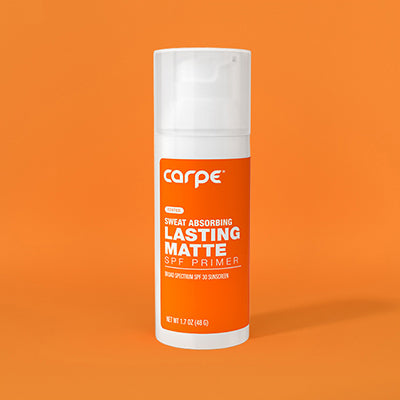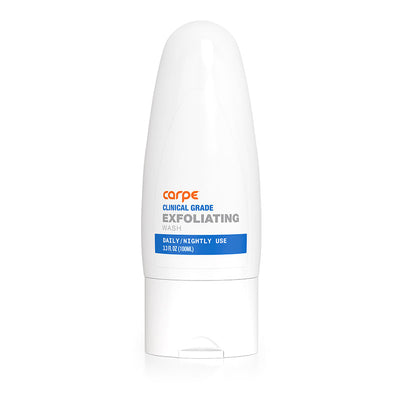For years, hyperhidrosis treatment required multiple visits to a doctor or dermatologist. Individuals often had little choice but to dedicate ample amounts of time and money to hyperhidrosis treatment at a medical facility. However, an increased focus in hyperhidrosis research and product development has produced methods to treat hyperhidrosis in the comfort of your own home. Fortunately, there are two effective medical methods to manage your hyperhidrosis at home: iontophoresis treatments and OTC treatments. Additionally, there are non-medical and behavioral approaches to manage your hyperhidrosis via alternative methods.
Method 1: Iontophoresis Sessions with a Personal Iontophoresis Machine
Iontophoresis is a treatment for palmar and plantar hyperhidrosis. It is a method that utilizes mild electrical currents to restrict the activity of the sweat glands in the human body, is a popular choice for many individuals seeking a non-invasive solution to hyperhidrosis. The shock the iontophoresis machine delivers is neither harmful or painful, and iontophoresis has been used for years by trained medical professionals.
Historically, iontophoresis has been administered by professionals at a doctor’s office or a sports therapy center; however, many individuals are now choosing to conduct iontophoresis treatments in their own residences. Similar to iontophoresis sessions at a doctor’s office, more and more individuals are choosing to purchase their own iontophoresis machines and conduct these iontophoresis treatment sessions in their homes . [1],[1]
Advantages and Disadvantages of Iontophoresis at Home:
Advantages to this method of iontophoresis include the convenience of doing treatments in your own home, as well as an eventual decrease in cost from avoiding the pay-per-session model of iontophoresis at a doctor’s office. When managing iontophoresis with a doctor, the session can only occur during the hours that the doctor’s office is open. Since many individuals would have to alter their work schedules several times a month to make an iontophoresis appointment during regular business hours, the cost of spending your valuable time in a doctor’s office can be quite high. Additionally, iontophoresis sessions can be quite expensive when done with a doctor. If you have attempted iontophoresis before and are confident it will work for you, investing in an iontophoresis machine could save you hundreds of dollars over time. [2],[3]
However, this upfront cost of a personal iontophoresis machine can be quite expensive. Typically, a complete iontophoresis kit can cost anywhere from $300-800 dollars, depending on the brand and the level of care the machine will provide. Before purchasing an iontophoresis machine, be sure to understand your potential purchase.
Method 2: Over-the-Counter Topical Treatments
Before seeking a prescription medicine to help stop hyperhidrosis, trying an "over-the-counter" topical solution for hyperhidrosis may be a sound decision.
Currently, there are several topical treatments and solutions that contain lower percentages of the same aluminum compounds found in prescription creams that can be purchased in both online and retail settings.[1]
Many times, people with hyperhidrosis struggle with stains on their clothing - due to either sweat or antiperspirant. Luckily, there are effectivemethods to remove armpit stains and strategies to get antiperspirant out of clothes Sometimes antiperspirant can be difficult to wash off, so there are special steps you can follow to remove antipersirant from your skin. The process involves making a paste to apply in the shower which you can then rinse off. Antiperspirant can have some irksome qualities, but it is a highly effective tool to reduce sweat production.
The difference between Over-the-Counter and Prescription Strength Topical Treatments
When determining whether or not a solution will be considered clinical strength (no prescription needed) or prescription strength, the deciding factor is the amount of the active aluminum ingredient in the treatment. Most prescription strength treatments use the same chemicals and formulas found in clinical strength treatments, just in higher percentages. Typically, a treatment requires a prescription if the active ingredient makes up more than 25% of the formula. However, this number can fluctuate a few percentage points depending on what specific active ingredient is being used to stop the sweat. Before trying a prescription strength solution, trying a clinical solution is often a good step. In case you are worried, it has been found that aluminum in antiperspirants does not cause cancer, as a viral email in the late 2000's once claimed. [1]
Specific Over the Counter Solutions to stop Hyperhidrosis
In addition to larger brands such as Dove and Degree that provide various kinds of general sweat support, there are several solutions created specifically to deal with excessive sweating and hyperhidrosis. Solutions such as Sweatblock, Carpe, and ZeroSweat, Certain Dri, and Duradry may be worth trying before attaining a prescription.
In addition to antiperspirant, some other over-the-counter products can also improve hyperhidrosis symptoms. For example, many people use foot powder in order to absorb extra moisture and soothe irritated skin. Foot powder can be used on other parts of the body besides feet as long as it is applied to other non-sensitive body parts. Baby powder can help with sweating by soaking up excessive mositure and preveting rub for those who struggle with sweat forming between skin creases. Some people wonder whether applying sunscreen will prevent sweating outside, but this appears to be unrelated. However, sunscreen is always an important part of any type of skin care routine.
Method 3: Make Your Home Work for You
In general, if you are already sweating, it is a good idea to stay in a cool place. Keeping your thermostat a little lower than average may help prevent some extra sweating and keep you more comfortable. You may also want to consider keeping small hand towels strategically placed around your house for those times that your hands are sweaty and you need a quick wipe down. Also, when you are at home wear comfortable, lightweight clothing to reduce excessive sweating and to keep yourself feeling fresh.
You want to be comfortable at night, so if night sweating is an issue for you, create an environment that suits your circumstances. Keep your room cool and dark and do your best to avoid stressful triggers before bedtime. Also, choose bedding that works for you. There are several types of sheets that may help from smart microfiber sheets to light cotton. Avoid heavy comforters that can suffocate skin.
When you are in the comfort of your own home you can wear clothes that are best suited to your own needs. If you have hyperhidrosis, this probably means wearing natural fibers and loose clothes that don't trap sweat. The best clothes for people with hyperhidrosis are made of materials like cotton, linen, or a moisture wicking material. It is also important to use sock materials that are best for sweaty feet like merino wool or moisture wicking fabric. Technology has improved over the last several years and mositure wicking fabrics have come a long way, especially for athletic socks. It is important that you feel comfortable in your own home and taking steps to tailor your environment to your own needs can make that a reality.
Sources
- Pariser, D. M. (2014). Hyperhidrosis (4th ed., Vol. 32). Amsterdam: Elsevier Pub. Co., 2014. Retrieved
- Scifers, James R, DScPT, PT, SCS,L.A.T., A.T.C., Lewandowski, Jeff, DPT, PT, SCS,A.T.C., M.T.C., O'Brien, Matthew, PhD, LAT, ATC, & Watts, Jay, RPh,F.A.C.A., F.A.C.V.P. (2013). Iontophoresis. Athletic Training & Sports Health Care, 5(3), 103-105. doi:http://dx.doi.org.proxy.lib.duke.edu/10.3928/19425864-20130509-03
- Nordqvist, C. (2017, December 21). Hyperhidrosis: Symptoms, causes, diagnosis, and treatment. Retrieved May 14, 2018,
16764909816681.jpg?v=1676490983)

16790753702383.jpg?v=1679075372)


16790746985853.jpg?v=1679074700)


16790757289763.jpg?v=1679075731)










